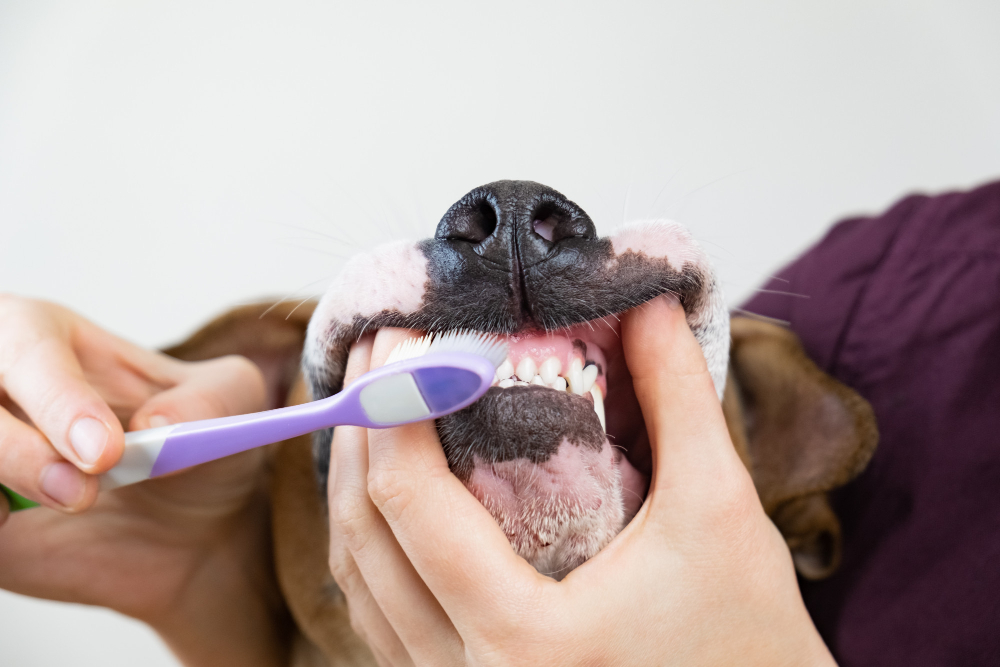Care for the oral hygiene of our pets is as vital to their wellbeing as care for their physical state. Unfortunately, many pet owners compromise on oral hygiene while providing routine care to their pets. This oversight could lead to significant health problems to include the periodontal diseases, bad breath, teeth loss, and even systemic complications like heart disease. Though the center stage on physical and emotional health of pets is prime, still oral hygiene similar to those of human beings is equally very important for their health and happiness.
Dental problems are not rare in tendentiously older dogs and cats. However, the dental problems like tartar, bacterial plaque, and dental calculus do not spare the young animals. The animal’s oral care is usually neglected leading to both distressing and painful consequences, as well as serious health complications. Often the severity of these issues only gets sensed when the animal is readied in acute symptoms such as disinclination to eat due to agonizing pain.
Luckily, having a dog or cat with proper dental health is possible. These include regular brushing of its teeth, providing it with a quality form of food, offering diets and/or treats to keep their dental health enhanced, keeping them away from exposures of harmful foods/drinks, taking them for occasional dental cleaning by a veterinary officer, and keenly monitoring any form of dental problems.
In this article, we explore the major signs of dental issues in pets, prevention techniques for common oral problems, and proper ways of taking care of your pet’s oral health. With this information at hand, you can take an important role in maintaining the dental health of your pet, a bright smile through its span of life.
Major Indicators of Dental Problems in Dogs and Cats
Early detection of dental issues is important in preventing the continued deterioration of the pet’s health. Here are some crucial signs to look out for:
- Bad Breath: This is an indication of the poor dental health in the pets, produced from the growth of plaque, tartar or even infections. The problem cannot be solved just by covering the smell with snacks or oral solutions. A veterinary visit will help to solve the issue after diagnosing and providing a cure for the actual reasons.
- Difficulty in Eating: Chewing or swallowing could be a sign of oral discomfort or pain, probably due to the dental issues. One should visit the vet on the spot.
- Too much Saliva: This could be another sign or symptom, particularly accompanied by difficulty in eating as well as bad breath.
- Inflamed or Bleeding Gums: Healthy gums should look firm and pink. Inflammation or bleeding could indicate periodontal disease, which is the serious condition leading to tooth loss and other complications.
- Tooth Loss: Besides the normal aging process in old dogs, tooth loss may be suggestive of severe periodontal disease or other chronic and debilitating dental conditions.
Mastering Pet Dental Care Through Prevention, Comfort, and Brushing Techniques
Pet dental care involves prevention, knowledge on treatment discomfort, and brushing technique approaches.
Prevention
Good tooth brushing, preferably twice in a week, with pet geared toothpaste and toothbrush is the key to avoiding oral problems. Indulging your pet with dental health toys that will massage gums and remove tartar from teeth can also be helpful in engaging your pet. Regular visits by your pet to a veterinary officer for an oral assessment and cleaning aid in curbing dental problems.
Treatment-Related Comfort
While the dental treatments would definitely give some discomfort to your pet, that scantiness is required here. Instead of providing treatment that might be extreme or harmful, soft care needs to be given with excellent cooperation from the veterinarian doctor related to managing pain and recovery.
Effective Technique to Brush Teeth
- Choice of Tools: It shall be a soft-bristled, specially purchased shop-specific toothbrush besides, of course, the pet-safe pet paste for pets too.
- Familiarization: Gradually introduce the toothbrush to the pet and the toothpaste. Smell the toothpaste by sniffing and licking should be accompanied.
- Gentle Brushing: Place a pea-sized amount of toothpaste on the brush. Gently brush your pet’s teeth in a circular motion, covering all tooth surfaces. Be patient and reassuring at all times.
- Consistency: One should make an effort on brushing as regular as possible. At least twice in a week promotes desirable dental health.
With these methods, one will be able to take care of the teeth of the pet thus contributing to the overall well-being and happiness.
Products that Help Dogs and Cats to Maintain Oral Hygiene
Besides brushing, other products might be introduced to help in mouth care:
- Pet Mouthwash: This will aid in mouth care activities to prevent the formation of plaques as well as bad breath. It can be added into water during drinking times or applied singly into the mouth.
- Tooth Sprays: These are both plaque reducers as well as breath fresheners to be sprayed directly on your pet’s teeth.
- Dental Treats: They are for the maintenance of dental health and removal of plaque. Choose oral treats with plaque fights like sodium hexametaphosphate or sodium tripolyphosphate as the ingredient.
While these products undoubtedly help maintain oral hygiene, they do not take place of regular tooth brushing.
Conclusion
In conclusion, the article suggests that a multi-modal approach including regular teeth brushing, any of these available products to maintain oral hygiene in the mouth of dogs and cats, and regularly consulting veterinary care are key factors to prevent dental diseases in dogs and cats. Following proper dental care routine enables you to guard your pet from dental issues that arise causing pain and other problems.
More so, for dog pet care measures on pain control, follow How to Spot and Manage Pain in Your Dog for a Happier Life that will be of great assistance for ensured pet health.

